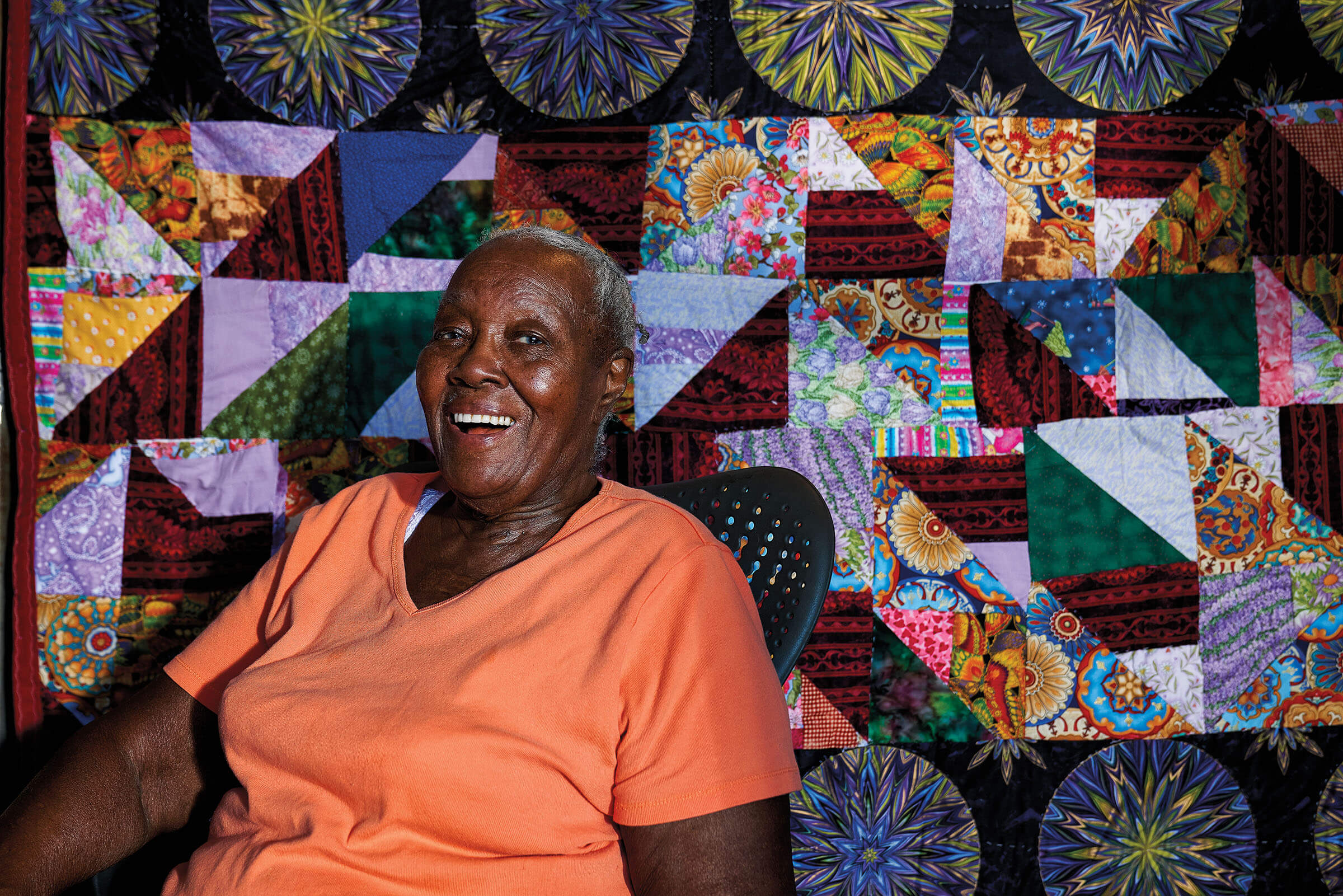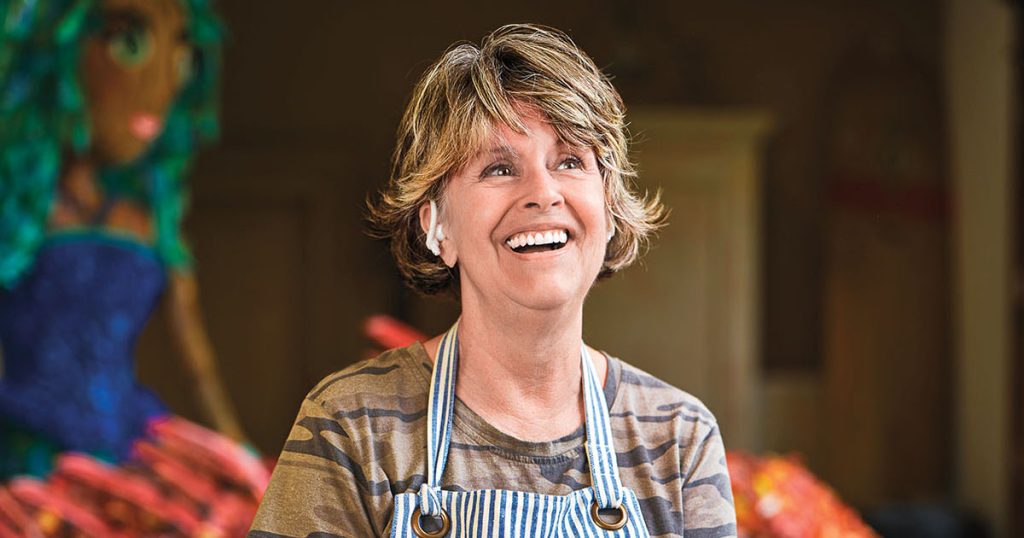
Laverne Brackens’ quilts are hypnotizing. They’ve been exhibited at the Texas Memorial Museum of Science and History and acquired by the Berkeley Art Museum in California. They’ve earned her a National Endowment for the Arts Heritage Fellowship in 2011. And this past June, her work was recognized in The New York Times, in an article about a contemporary of hers, quilter Rosie Lee Tompkins.
But a young Brackens wasn’t looking to gain recognition for her quilting. Over 30 years ago, she experienced a work accident that left her with no option but to go into early retirement. This put her on a journey through incorrigible restlessness that led her to embrace a family tradition that has now stretched over four generations. “I had to have something to do with my hands to keep me satisfied,” says Brackens, 93. “If I’m not doing something with my hands, I’m not comfortable.”
African American quilters have a long history of this sacred textile folk art. Black enslaved women used to sew and weave for affluent white families. Quilts were also used as a coded communication tool by enslaved folks—a topic of controversy in the quilting world. Akin to storybooks, quilts archive Black American heritage.
Brackens recalls tacking cloth together for her mother, who would participate in quilting circles around her childhood neighborhood of Fairfield. Brackens was wary of sewing because she didn’t want to “prick her fingers,” but the very craft she shunned now grants her peace of mind. Each of her quilts has its own personality, with a patchwork of vibrantly colored strips of fabric sewn into a kaleidoscope of patterns. Brackens has 300 quilts in her possession and has given away hundreds more. She sells them out of her Fairfield home under the name Quilts of Color.
Brackens says her designs often come to her in dreams. She then wakes up in the middle of the night and arranges her vision to be sewn the next morning. “You’d be surprised at what you can do with the material,” she explains. “The quilt takes you where it wants you to go, not where you want to go.”








